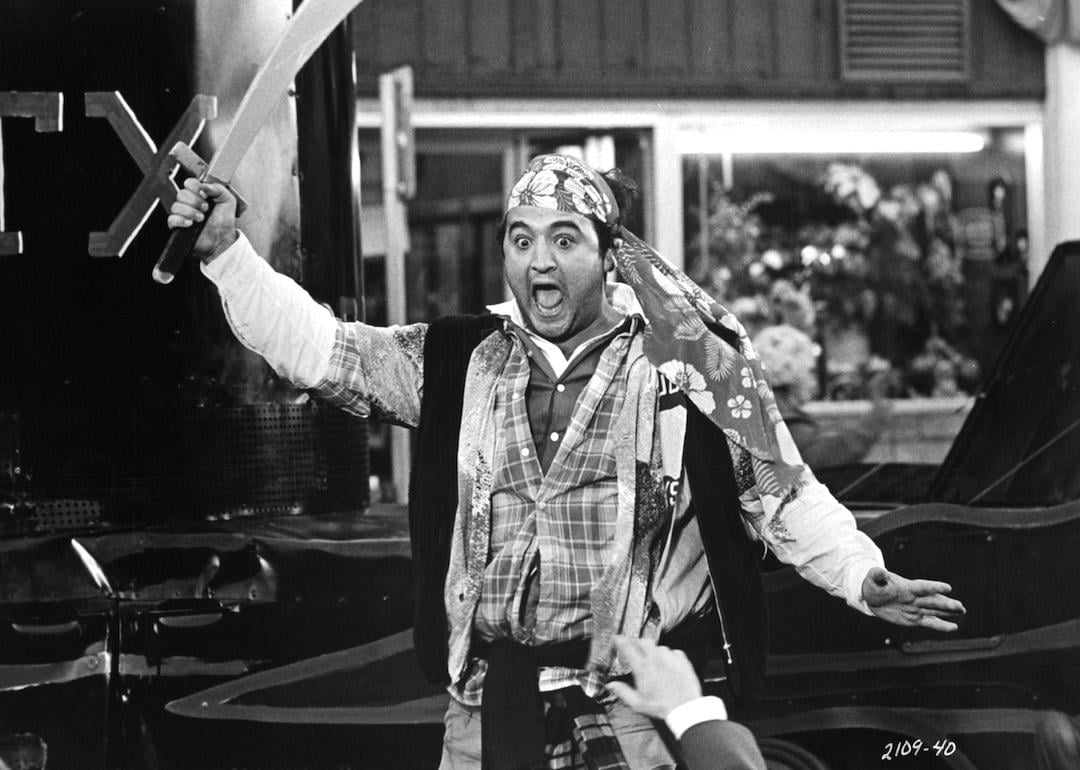
How car ownership affects your insurance costs and coverage
How car ownership affects your insurance costs and coverage
Whether you own, finance, or lease your car significantly affects insurance costs. Lenders require “full coverage” on financed or leased cars, which drives premiums higher. If you own your car outright, you have the option to carry just minimum liability coverage instead, a choice that can save you hundreds of dollars a year. CheapInsurance.com breaks down how ownership type impacts premiums, why lender requirements matter, and what steps you can take to avoid overpaying for coverage.
The hidden cost impact of vehicle acquisition
How you get your car (buying, financing, or leasing) has a big impact on insurance costs. According to Technavio, leasing is on the rise. Ownership structure matters because it dictates coverage requirements.
According to Forbes Advisor, national averages show full coverage costs around $2,149 a year, while minimum liability runs closer to $631. This rate reflects full coverage car insurance, which goes beyond liability and includes protection for theft, collision damage, and non-crash events like fire or flooding.
That gap shows how lender and leasing requirements can add hidden costs, often pushing insurance bills much higher than what outright owners face.
Understanding the three ownership models
Owned vehicles (Paid in full)
Owning your car outright gives you the most freedom when it comes to insurance. With no lender setting requirements, you can choose to carry only your state’s minimum liability coverage if that fits your budget and comfort with risk.
The savings can be significant. Consumer Reports estimates that dropping collision and comprehensive coverage cuts costs by about $1,165 a year. For drivers with older or lower-value cars, outright ownership often makes it easier to trim insurance expenses without taking on unnecessary coverage.
Financed vehicles
When you finance a car, the lender keeps a lien on it until the loan is paid off. Since the bank or credit union wants to protect its investment, you’re required to carry full coverage, collision, and comprehensive included. That alone makes insurance much pricier than liability-only coverage.
According to AOL, the average monthly loan payment is about $745, and long loan terms make financing especially costly. For most drivers, the mix of loan payments and higher insurance premiums makes financing the most expensive way to own a car.
Leased vehicles
When you lease a car, the dealership or leasing company still owns it; you’re just paying to use it, usually for about three years. Also, according to AOL, payments tend to be lower than financing, averaging around $595, but the insurance rules are stricter. Leasing companies usually require higher liability limits, plus comprehensive and collision coverage, and often gap insurance to cover depreciation.
All of that adds up to higher insurance premiums than what outright owners pay, even though you don’t build equity in the car. For budget-conscious drivers, the smaller monthly payment can be offset by the added cost of coverage.
Insurance requirements by ownership type
State minimum requirements (All vehicles)
No matter if you own, finance, or lease your car, liability insurance is required in almost every state. According to a 2023 State Minimum Auto Insurance Requirements Report, the one exception is New Hampshire, where drivers can skip coverage if they prove financial responsibility. State minimum liability policies are meant to cover injuries and property damage you cause to others, but they often fall short in serious accidents. Forbes Advisor reports the average cost of a minimum policy is about $631 a year, making it the cheapest option but also the one with the least protection.
Financed vehicle requirements
When you finance a car, your insurance requirements are set by both state law and your lender. For instance, Toyota Financial Services requires borrowers to carry physical damage coverage that protects the car’s full value for the entire loan term. Unlike leases, there aren’t extra liability requirements beyond your state’s minimums, but you must still meet those.
One advantage is that there are no restrictions on deductibles for financed vehicles, giving borrowers more flexibility in how they structure their policy. Ultimately, these rules ensure the lender’s investment is covered until the loan is paid off.
Leased vehicle requirements
Since the leasing company owns the vehicle, it wants stronger protection for its asset. According to Car and Driver, most leases require higher liability limits, often $100,000/$300,000, well above what states mandate.
You’ll also need full physical damage coverage for the car’s value, with deductibles typically capped at $1,000. On top of that, leasing companies may set higher minimum coverage amounts than lenders do for financed vehicles. All of this adds up to higher premiums, which makes leased cars more expensive to insure than vehicles you own or finance.
The financial impact of switching to ownership
Immediate savings opportunities
Paying off your car loan or lease and fully owning the vehicle can lead to major insurance savings. Consumer Reports estimates that dropping collision and comprehensive coverage once the car is yours can save drivers about $1,165 a year.
Full ownership also lets you raise deductibles to cut premiums even more. These changes are especially valuable for older cars with lower replacement values, where carrying full coverage often isn’t worth the cost.
Long-term financial benefits
Switching to full ownership delivers more than just upfront savings; it also unlocks long-term financial benefits. A 2024 Consumer Reports auto insurance survey found that drivers who changed insurers saved a median of $461 per year, showing how valuable it can be to shop around once lender restrictions no longer apply.
Without financing or leasing requirements, you’re free to set coverage levels based on your car’s true value instead of meeting strict lender rules. That flexibility lets owners tailor insurance to fit their budget and risk tolerance, making coverage more cost-effective over time.
When full coverage still makes sense for owned vehicles
Cutting extra coverage can lower premiums, but full coverage is still the better option in some cases. Newer cars with high replacement costs are the clearest example; repairs or a total loss could be financially overwhelming without collision and comprehensive protection.
Drivers with limited savings face the same risk, since paying out of pocket may not be realistic. Full coverage also helps with everyday issues like glass damage, which can be expensive even on older cars. In these situations, keeping broader protection offers peace of mind and shields your budget from surprise costs.
Expert insights and consumer finance perspectives
Consumer finance expert analysis
Most drivers continue to pay for more than just the bare minimum. Data from the National Association of Insurance Commissioners shows about four in five insured drivers carry comprehensive coverage and 77% carry collisions. This reflects a widespread understanding that liability-only policies can leave big financial gaps.
At the same time, the NAIC reports average auto insurance costs rose 6.1%, reaching $1,127 in 2022, a clear sign of the growing financial pressure on households. Financial experts advise drivers to regularly reassess whether their car’s value still justifies full coverage, weighing potential repair or replacement costs against steadily rising premiums.
Consumer behavior trends
Consumer expectations for insurance are shifting well past simple claims payouts. A Bain & Company report found that more customers now want insurers to help prevent losses, not just reimburse them. Concerns over extreme weather, pandemics, and financial uncertainty are reshaping how people view risk. The survey showed 80% of respondents want insurers to include ESG initiatives, and 59% want life insurers to reward healthy habits. These results point to a growing demand for insurance that feels purpose-driven and value-rich, offering more than just basic coverage.
Strategic recommendations for different life stages
New car buyers
When buying a new car, the sticker price is only part of the equation. The total cost of ownership also includes insurance, and requirements differ based on how you pay. Financing usually means carrying full coverage, while paying in cash gives you more flexibility to choose your level of protection.
Before closing the deal, it’s smart to get insurance quotes for both financing and outright ownership. Building those costs into your decision helps ensure the long-term expense fits your budget and comfort with risk.
Current financed/leased vehicle owners
Drivers with financed or leased cars may be locked into stricter insurance requirements, but they still have options to cut costs. Reviewing your policy each year can reveal savings opportunities while keeping you in line with lender rules.
If you can afford it, raising deductibles is another way to lower premiums without losing essential coverage. Bundling auto insurance with homeowners or renters policies can also unlock multi-policy discounts, adding up to meaningful savings over the course of a loan or lease.
Transitioning to ownership
Once you’ve paid off your loan, it’s smart to notify your insurer right away so your policy reflects full ownership. From there, you can decide if full coverage still makes sense based on your car’s age and value.
Consumer Reports suggests dropping collision when the yearly premium is more than 10% of the car’s value, a simple rule of thumb to keep costs in check. Full ownership also gives you the freedom to raise deductibles or adjust coverage levels, making it easier to shape your policy around your budget and risk comfort.
Common misconceptions and pitfalls
Insurance automatically becomes cheaper
A common misconception is that insurance automatically gets cheaper once you’ve paid off your car. In reality, rates don’t drop just because you now own the vehicle outright. As FinanceBuzz points out, the savings come from the flexibility ownership gives you, like raising deductibles or dropping extra coverages, not from ownership status alone. Without reassessing your coverage, you may not notice much of a difference in premiums.
Liability-only is always adequate
Another common myth is that liability-only coverage is always enough. While it’s the cheapest option, it can leave big gaps if you don’t factor in your car’s value and your own finances.
If you drive a newer or expensive-to-repair vehicle, the out-of-pocket costs from an accident could easily outweigh what you save on premiums. That’s why it’s important to weigh the risks carefully before dropping collision or comprehensive coverage.
All lenders have the same requirements
Not every lender handles insurance the same way. Coverage requirements can vary based on the financial institution and your loan terms. Banks often set stricter minimums to protect their investment, while some credit unions and smaller lenders may allow more flexibility with deductibles or coverage levels.
Assuming the rules are the same across the board can lead to surprises at signing, so it’s smart to review the specific insurance requirements before locking in a financing deal.
Future trends and considerations
Technology impact
According to MarketsandMarkets data, usage-based insurance is catching on fast. More insurers are adding it as an option, and some now operate solely on this model — proof of how quickly it’s being adopted.
Telematics is also driving change. Instead of basing premiums mainly on demographics, advanced telematics tools measure actual driving habits like speed, braking, and time of travel. This move toward real behavior gives insurers a clearer picture of risk and allows for more accurate, personalized pricing.
Electric vehicle considerations
Rising repair costs are pushing insurance rates higher, especially for electric vehicles. EVs often cost more to fix than gas-powered cars because of pricey battery replacements, specialized parts, and the need for certified technicians. Insurers factor in these risks, which is why premiums for EVs are often higher.
Leased EVs also come with added considerations. Lease contracts usually require higher coverage to safeguard the leasing company’s investment. And while EVs may qualify for federal tax credits of up to $7,500, those credits typically go to the leasing company, not the driver. That makes it crucial to understand how insurance requirements and incentives line up before signing a lease.
Market evolution
Brigham Young University research suggests autonomous vehicles could cut auto insurance claims by as much as 90%, since most crashes stem from human error. A drop that steep would upend how insurers calculate risk and set premiums, while also making ownership alternatives, like subscription models and ride-sharing, more central to the future auto market.
Actionable steps for consumers
Before purchasing/leasing:
- Get insurance quotes. Compare costs across ownership, financing, and leasing to see how they differ.
- Factor insurance into total costs. Weigh premiums alongside monthly payments to get the full picture of affordability.
- Understand lender requirements. Check financing or leasing terms carefully so you’re not surprised by extra coverage rules.
During ownership/financing period:
- Review coverage yearly. Ensure your policy still matches your finances and your car’s value.
- Shop for better rates. Compare insurers while meeting any lender requirements.
- Look for bundling discounts. Combine auto with home or renters insurance to cut overall costs.
Upon loan payoff:
- Contact your insurer right away. Update your policy to reflect full ownership.
- Reassess coverage. Adjust protection based on your car’s value and your risk tolerance.
- Shop around. Compare quotes to find the most cost-effective option.
Key takeaways
Ownership status has a big impact on insurance costs and requirements. Financed and leased cars usually come with stricter coverage rules, while fully owned vehicles give drivers more freedom to choose their policies.
The smart move is to base coverage decisions on your own situation — your car’s value, how much you could handle in unexpected repair costs, and your comfort with risk. Balancing those factors helps strike the right mix of protection and affordability.
Final recommendations
When choosing whether to buy, finance, or lease a car, it’s key to factor in the total cost of ownership — including insurance, which can add a big expense. Owning a car outright usually gives you more freedom to adjust coverage and lower costs, while financed and leased vehicles almost always require more extensive policies.
No matter how you own your car, reviewing your insurance regularly helps you stay properly protected without paying more than you need, and lets you take advantage of savings as your circumstances change.
This story was produced by CheapInsurance.com and reviewed and distributed by Stacker.



